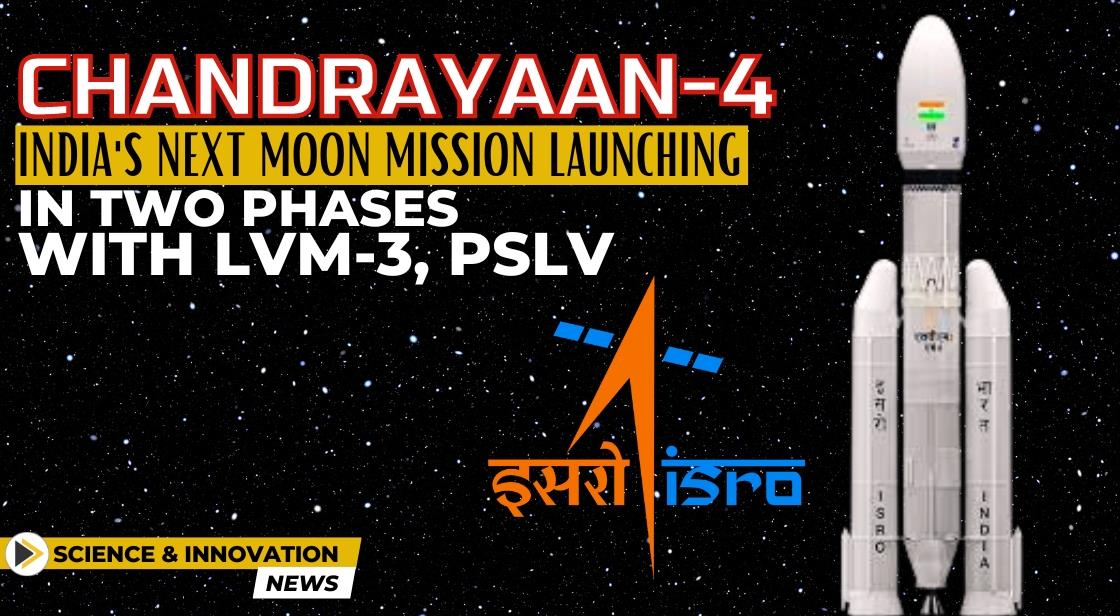Chandrayaan-4: India's Next Moon Mission Launching in Two Phases with LVM-3, PSLV

News Synopsis
After the successful completion of the Chandrayaan-3 mission, the Indian Space Research Organization (ISRO) is currently gearing up for the next Chandrayaan-4 lunar expedition. But unlike its predecessor, Chandrayaan-4 won't be introduced all at once.
In its place, two independent rockets will be used to send out spacecraft that will return rocks and soil samples, or "lunar regolith," to India in addition to making a lunar landing.
There were three primary parts to Chandrayaan-3: a propulsion module, a rover, and a lander. On the other hand, two other parts of Chandrayaan-4 will be responsible for returning lunar samples to Earth. S Somnath, the chief of ISRO, described these extra elements during the National Space Science Symposium.
The following are the five modules that comprise Chandrayaan-4:
Propulsion Module: Similar to Chandrayaan-3, Chandrayaan-4 will use this module to help it in lunar orbit before separating from the main module.
Descender Module: Similar to Chandrayaan-3's Vikram lander, this module is in charge of the lunar landing.
Ascender Module: This module will separate from the lander and begin the return trip to Earth after gathering and storing samples.
Transfer Module: This module will return to Earth after retrieving the ascender module and guiding it out of lunar orbit in order to release the capsule holding the soil and rock samples.
Re-entry Module: After making the round trip back from the Moon, this capsule will descend to Earth-bearing lunar regolith.
The components of the Chandrayaan-4 mission will need to be launched in two separate launches.
Three modules will be launched in the initial launch:
The propulsion module, the descender module, and the ascender module. India's heaviest launch vehicle, LVM-3, will carry these modules. This launch is scheduled to coincide with the 2023 Chandrayaan-3 mission.
A Polar Satellite Launch Vehicle (PSLV) will carry out the second launch, which will include the Transfer Module and the Re-entry Module. Which launch will happen first has not yet been revealed by ISRO, though. Interestingly, this will be the first mission to use two launch vehicles to complete a single mission goal.
In addition to pursuing more challenging goals, Chandrayaan-4 seeks to expand on the accomplishments of the just completed Chandrayaan-3 mission.
Making India the fourth country to return samples from the lunar surface, Chandrayaan-4, if successful, will further India's space exploration endeavors.
India’s lunar exploration program has made great strides with the launch of the Chandrayaan-4 mission. Through its creative Methodology and Audacious goals, it hopes to demonstrate India's prowess in space exploration while deepening our understanding of the Moon.
The Indian Space Research Organization (ISRO) is actively preparing for the next Chandrayaan-4 lunar voyage following the successful conclusion of the Chandrayaan-3 mission.
However, Chandrayaan-4 will not be unveiled all at once like its predecessor did.
Instead, two separate rockets will be utilized to launch spacecraft that will both make a lunar landing and return rocks and soil samples, or "lunar regolith," to India.
You May Like









